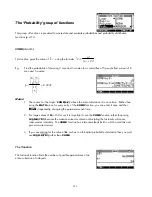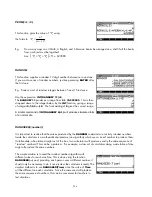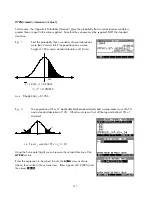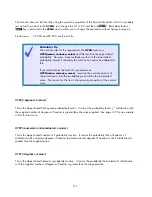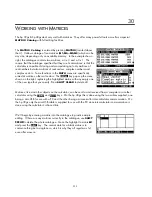
RECURSE
This functions is provided for programmers to let them define functions in
the Sequence aplet.
For example, typing
RECURSE(U,U(N-1)*N,1,2) U1(N)
seemingly
produces no useful result in the
HOME
view, but would produce the
result shown right in the
SYMB
view of the Sequence aplet. The
resulting sequence is the factorial numbers.
The syntax is:
RECURSE(<seq.name>,<defn of term n>,<1st term>,<2nd term>)
and it must be stored into a sequence such as
U1,U2..U9,U0
for it to have any meaning.
Σ
(<var_name>,<num>,<num>,<expression>)
This function, also available on the keyboard, offers a way of calculating the results of summation notation
problems. The syntax of the function is ordered in the same way as one reads a summation expression (see
the examples below).
5
2
2
2
Eg. 1
∑
i
which expands to
1
2
+
2
+
3
2
+
4
+
5
2
giving an answer of 55,
i
=
1
can be evaluated using
(I=1,5,I
2
)
6
Eg. 2
∑
x
i
where
x
1
= −
2,
x
2
=
10,
x
3
=
13,
x
4
=
11,
x
= −
20,
x
=
2
5
6
i
=
1
can be evaluated by first defining a list
L1
as
{-2,10,13,11,-20,2}
and then calculating
(I=1,6,L1(I))
Note:
Although the variable
I
was used as the summation index in
each of the cases above, there is nothing special about them.
‘i’, ‘j’ & ‘k’ are simply the letters traditionally used in
mathematical problems involving summation. When working in
the hp 40gs CAS it is not possible to use ‘i’ because the CAS
will interpret it as
i
rather than as a variable name.
194


























